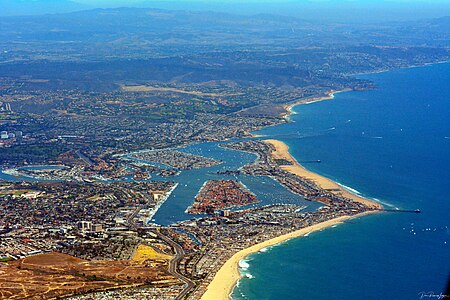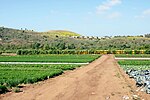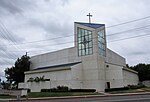Orange County, California

Orange County is located in the Los Angeles metropolitan area in Southern California. As of the 2020 census, the population was 3,186,989, making it the third-most populous county in California, the sixth most populous in the U.S., and more populous than 21 U.S. states. Although largely suburban, it is the second most densely populated county in the state, behind San Francisco County. The county's three most populous cities are Anaheim, Santa Ana, and Irvine, each of which has a population exceeding 300,000. Santa Ana is also the county seat. Six cities in Orange County are on the Pacific coast, including Seal Beach, Huntington Beach, Newport Beach, Laguna Beach, Dana Point, and San Clemente. Orange County is included in the Los Angeles-Long Beach-Anaheim Metropolitan Statistical Area. The county has 34 incorporated cities. Older cities like Santa Ana, Anaheim, Orange, and Fullerton have traditional downtowns dating back to the 19th century, while newer commercial development or "edge cities" stretch along I-5 between Disneyland and Santa Ana and between South Coast Plaza and the Irvine Business Complex, and cluster at Irvine Spectrum. Although single-family homes make up the dominant landscape for most of the county, Northern and Central Orange County is relatively more urbanized and dense as compared to those areas beyond Irvine, which are less dense, though still contiguous and primarily suburban rather than exurban. The county is a tourist center, with attractions like Disneyland, Knott's Berry Farm, Mission San Juan Capistrano, Modjeska House, Segerstrom Center for the Arts, Yost Theater, Bowers Museum, Balboa Island, Angel Stadium, Downtown Santa Ana, the Honda Center, and several popular beaches along its more than 40 miles (64 km) of coastline. It is also home to a major research university, the University of California, Irvine (UCI), along with a number of other notable colleges and universities such as Chapman University and Cal State Fullerton.
Excerpt from the Wikipedia article Orange County, California (License: CC BY-SA 3.0, Authors, Images).Orange County, California
San Diego Creek Trail, Irvine Oak Creek
Geographical coordinates (GPS) Address Nearby Places Show on map
Geographical coordinates (GPS)
| Latitude | Longitude |
|---|---|
| N 33.67 ° | E -117.78 ° |
Address
San Diego Creek Trail
San Diego Creek Trail
92604 Irvine, Oak Creek
California, United States
Open on Google Maps






